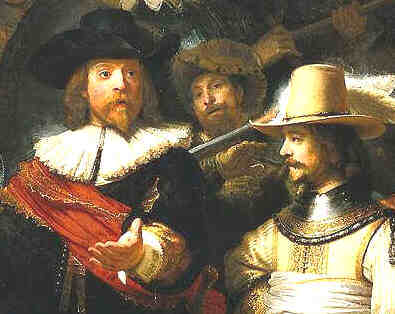 Deaths
which occurred on a 15 July:
Deaths
which occurred on a 15 July: 2002 Samantha Runnion, 5 [photo >], sexually abused, and murdered by suffocation after being abducted kicking and screaming by Alejandro Avila who drove up making a U-turn and asked for help finding his dog, as Samantha was sitting on a wall 50 m from her townhouse complex home in Stanton, California, playing a board game with a friend, Sarah Ahn, 5, who would give police an amazingly accurate description of the abductor and of his car. Samantha's nude body, would be found the next day 120 km away, on the edge of the Cleveland National Forest. Avila would be arrested on 19 July 2002. In 2000 Avila was acquitted by a jury of molesting two girls in Riverside County. One of the girls, the 9-year-old daughter of Avila's ex-girlfriend Mrs. Elizabeth Veglahn Coker, lived in the same townhouse complex as the Runnions.
2001 Ramesh Narayanan, 38, his wife Kanchana, 34, and their three daughters, ages 10, 9, 1. ^top^
Their bodies are found early the next morning on a bed in their home in the Anna Nagar neighborhood of Chennai, India. A couple of soft drink bottles, five empty glasses and a vial with an insecticide label are found on a nearby table. A suicide note by Narayanan implies that police harassment drove him to kill himself. Suicide or murder masquerading as suicide? Narayanan was a wealthy civil contractor and a close associate of Chennai Mayor M.K. Stalin.
2000 John O. Pastore, 93, former Rhode Island governor and longtime U.S. senator.
| 1997 Gianni Versace, murdered,
fashion designer.
^top^ Spree killer Andrew Cunanan murders world-renowned Italian fashion designer Gianni Versace on the steps outside his Miami mansion. Versace was shot twice in the head, and Cunanan fled. Andrew Cunanan had no criminal record before the spring of 1997, when he began a killing spree in Minneapolis. On 27 April 1997, after traveling from San Diego, Cunanan bludgeoned Jeffrey Trail to death. Trail was an acquaintance of David Madson, an ex-lover of Cunanan's whom Cunanan in turn murdered on 03 May. Cunanan shot Madson in the head, dumped his body near a lake outside Minneapolis, and took his red Jeep Cherokee. Two days later, in Chicago, he gained access to the estate of wealthy developer Lee Miglin, beat him to death, and stole his Lexus. On 09 May Cunanan abandoned Miglin's automobile in Pennsville, New Jersey, and shot cemetery caretaker William Reese to death for his red pickup truck. With a massive FBI manhunt for Cunanan already underway, he drove down to Miami Beach and on July 11 was recognized by a fast-food employee who had seen his picture on the television show America's Most Wanted. However, the police arrived too late, and four days later Cunanan shot Versace to death outside his South Beach mansion. Although Cunanan and Versace were both openly gay and ran in similar circles, the police failed to find evidence that they had ever met. Versace's killing set off a nationwide manhunt for Cunanan, who was famous for his chameleon-like ability to appear differently in every picture taken of him. However, on 23 July, the search ended just 40 blocks away from Versace's home on a two-level houseboat that Cunanan had broken into. There, police found him dead from a self-inflicted bullet wound from the same gun that took the lives of two of his victims. He left no suicide note. |
1948 John J. Pershing, 87, US General (WW I)
1931 Bortkiewicz, mathematician.
1916 (05 July?) Georges Lemmen, Belgian Art Nouveau painter born on 25 November 1865. — MORE ON LEMMEN AT ART “4” JULY — LINKS — Avec le plus vif de plaisir, chère Madame! — 65 Avenue de Longchamp...Et bon train! — Demain Lundi entre 7 et 8 h — The Beach at Heist — Portrait of Mme. Lemmen — Les soeurs Serruys — Le petit Pierre — Le petit Pierre avec tournesols — Woman and Child — Three Little Girls — 42 images at Webshots
1875 Jean Charles Joseph Remond, French artist born on 19 April 1795.
1869 A. J. Hayne, Black captain of Arkansas militia, assassinated.
| 1863 The victims of the third
day of the New York City Draft Riots
^top^ During the Civil War, major riots break out in New York City against the implementation of the first wartime draft in US history. The majority of the rioters are Democratic Irish laborers outraged that exemptions from the draft can be legally bought for $300, a small fortune out of reach of the average worker. Many of the rioters are also opposed to the Union war effort because of fears of losing their jobs to emancipated African-American slaves. The conscription act, passed by Congress on 03 March, called for registration of all males between the ages of twenty and forty-five years by 01 April. On 11 July, the first names of draftees were drawn in New York City. Two days later, a mob swarmed into the draft office at 3rd Avenue and 45th Street in Manhattan, set it on fire, and nearly beat the superintendent to death. Within an hour, the entire block was burning, the riot was spreading, and looting had begun. The Federal troops usually stationed in the city had not yet returned from Gettysburg, so New York City police faced the enraged mobs alone. Well-dressed men on the street were beaten, a police captain was killed, and several Protestant churches were burned. The mob then turned it anger against African Americans, and eleven people were lynched, burned alive, or beaten to death. By 15 July several dozen protesters had been killed along with another policeman, and the first troops hastily marching back from Gettysburg arrived. Before the riot was suppressed the next day, eight soldiers and scores of rioters had been killed. In total, over one hundred people perished during the four days of violence. Protests and riots against the draft also erupted elsewhere, but none as costly as those that occurred in New York. New York’s city council later announced that city funds would pay the $300 commutation fee for any man too poor to pay it himself, and in August, the draft act was suspended all across the Union. |
1841 Savary, mathematician.
1823 St Paul's Outside the Walls, destroyed by a fire. The original church was erected in Rome in AD 324 by emperor Constantine.
1821 (25 July?) John Lewis Krimmel, US painter born German on 30 May 1786. — Maler Johann Ludwig Krimmel aus Ebingen — Auction buyer of Pepper-Pot, A Scene in the Philadelphia Market sued for knowing it was by Krimmel. — MORE ON KRIMMEL AT ART “4” JULY — Online images: — Quilting Frolic — 4th of July — Center Square — The Blind Fiddler — Interior of an American Inn — Blind Man's Buff — Jacob Ritter Sr. “The Botanist” — The Conflagration of the Masonic Hall, Chestnut Street, Philadelphia, Pennsylvania — Country Wedding – Bishop White Officiating — Procession of the Victuallers — Ebingen — Election Day at the State House — Fourth of July Celebration — The Cherry Seller — Fourth of July Celebration in Centre Square (1819) — Black People's Prayer Meeting
1765 Charles André van Loo, French artist born on 15 February 1705.
1609 Annibale Carracci, Italian painter born on 03 November 1560. — MORE ON CARRACCI AT ART “4” JULY — LINKS — The Beaneater — Butcher's Shop — Fishing — Hunting — The Choice of Heracles — Venus with a Satyr and Cupids — Assumption of the Virgin Mary — Lamentation of Christ — Triumph of Bacchus and Ariadne (detail) — The Cyclops Polyphemus — Domine quo vadis? — A Man with a Monkey — 33 prints at FAMSF
1099 Un massacre marque la fin "officielle" de la première Croisade, après que les Infidèles eussent restitué les Lieux Saints (Tombeau du Christ) aux Croisés, sous l’autorité de Godefroy de Bouillon (selon le poète italien Le Tasse). — The Muslim citizens of Jerusalem surrender their city to the armies of the First Crusade. The Crusaders then proceeded, through misguided religious zeal (??!!), to massacre thousands of unarmed men, women and children.
0998 Abu'l-Wafa, mathematician
